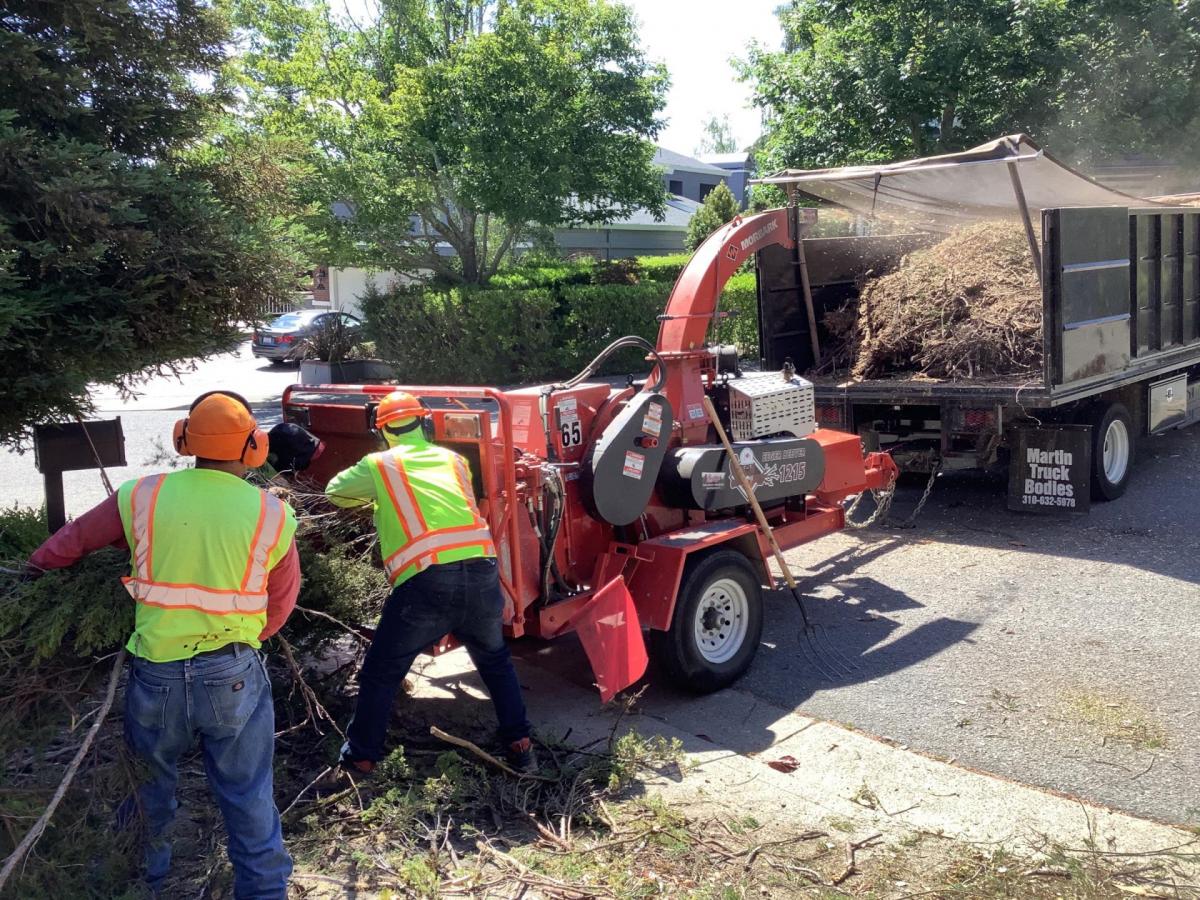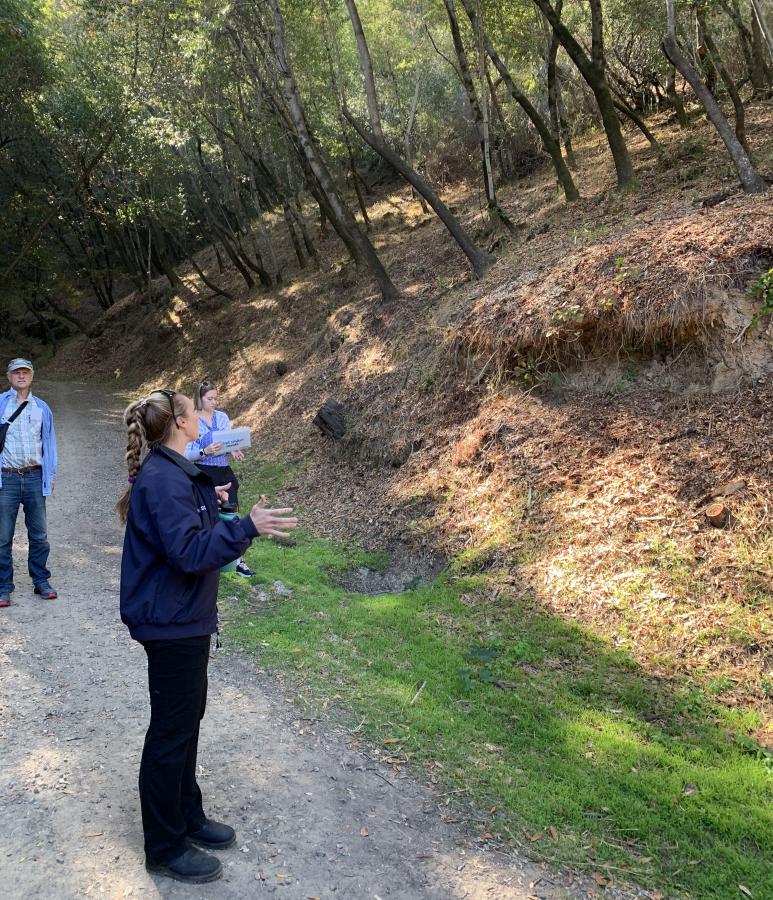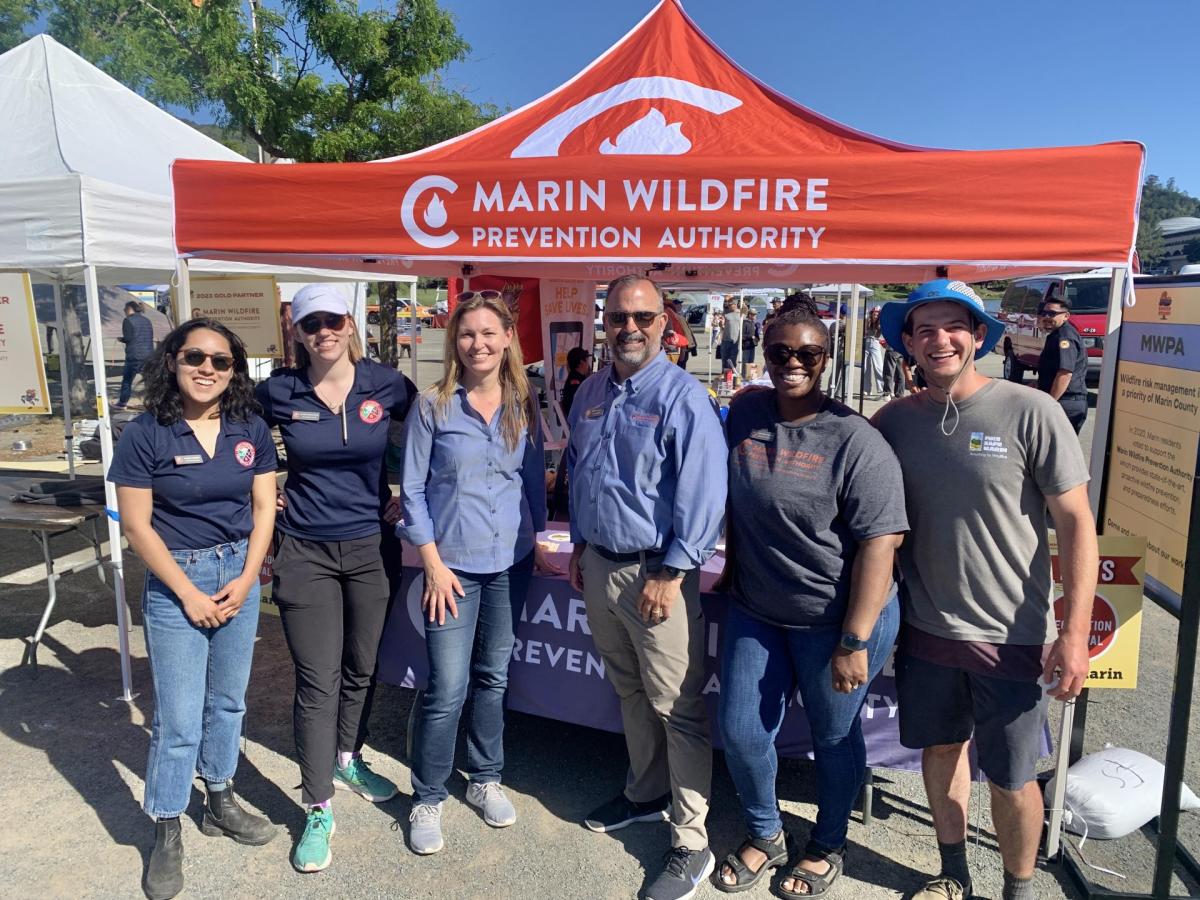How to become a fire-adapted community
Larkspur Vice Mayor Catherine Way and San Rafael Council Member Rachel Kertz are board members on the Marin Wildfire Prevention Authority; they can be reached at info@marinwildfire.org.
In 2020, Marin County voters overwhelmingly approved something no other county has done in California. They created the Marin Wildfire Prevention Authority — the first joint powers authority (JPA) exclusively dedicated to local wildfire protection.
There is now a single agency in Marin coordinating the response to the rising threat of wildfires. Marin County voters took the initiative to protect their communities with the creation of Marin Wildfire. The agency’s $21 million annual budget is funded by a property tax measure, which the voters can renew in ten years.
“For all of us, the threat of wildfire is a constant presence,” said Julie McMillan, Marin Wildfire board president and Town of Ross Council Member. “Now we are systematically doing something about it rather than crossing our fingers or wringing our hands.”
It’s not a matter of “if” but “when”
In early California, wildfires were part of the natural environment. However, for over a century, land management practices treated wildfires with immediate suppression. Decades of fire suppression, coupled with climate change, have dramatically increased wildfires’ size and intensity. Building in or near forests and natural vegetation — an area known as the wildland-urban interface — has only made wildfires worse.
In Marin County, the concern over wildfires is profound. The hillside topography, vast open space, and heavily forested areas make the area extremely susceptible to fire.
When the Northern California fires of 2017 caused tremendous destruction throughout the region, Marin was spared. Nevertheless, witnessing the speed and intensity of multiple fires was a major wake-up call for local leaders and residents throughout the county.
It was not a matter of “if” that could happen in Marin, but a matter of “when.”
With this renewed awareness, a broad coalition of elected officials, fire experts, and community stakeholders came together to reimagine fire safety through a holistic lens that would break down the jurisdictional boundaries of Marin’s various cities and towns. Ultimately, this vision took the form of the new JPA among nearly all of Marin’s municipalities, which would help the region become fire-adapted through a systematic, coordinated approach.
“Marin residents understood that we needed to be prepared in this new era of wildfires,” said Mark Brown, executive officer of the Marin Wildfire. “The reality is that these fires know no boundaries. Collectively, it is up to each of us to take proactive measures before a major fire comes to our doorstep.”
Transitioning to a fire-adapted community
Marin Wildfire had a clear mission from its inception: Marin County must learn to co-exist with wildfire by adopting fire-adapted strategies. Any city, regardless of whether it’s in a JPA or not, can follow this systematic approach to wildfire adaptation. It starts with a “House Out” strategy — preparing residents to evacuate, hardening homes, and creating defensible space. The core priorities of the work plan include:
- Escape route and systems improvements: Marin Wildfire works with each of its member agencies to improve the safety and reliability of evacuation routes. The JPA implemented an evacuation, ingress and egress risk-assessment project using literature and data review. It modeled wildfire, communications, and traffic to create detailed fire model maps for five test areas of Marin, informing the design of critical evacuation routes and fire road projects.
- Home hardening: Research shows that homes are the major contributors to fire spread during urban conflagrations. Keeping homes from igniting limits the spread of fires and decreases the devastation. To prioritize a countywide home hardening effort, Marin Wildfire funded a property-specific risk analysis to help identify the riskiest areas of homes, rank mitigation efforts, and track risk.
- Defensible space/fire-smart landscaping: Wildfire research has also shown that landscaping threatens homes as much as natural vegetation. Marin Wildfire mitigation specialists conduct home evaluations and advocate for removing all flammable objects and vegetation from within the first five feet of the home and incorporating fire-smart landscaping within 30 feet of the home. The agency also provides free wood chipper days to help homeowners remove excess fuel from their properties and allocates millions in grant funding to assist residents in making their homes and properties more fire-resistant.
- Vegetation management: Marin Wildfire and its partner agencies have a comprehensive vegetation management program guided by the Marin County Community Wildfire Protection Plan and land management agencies’ resilience plans. Using the latest scientific fire risk models, the agency prioritizes shaded fuel breaks and fuel reduction zones along the wildland-urban interface designed to slow or stop a wildfire. Vegetation management can reduce the risk of wildfires and increase the health of the environment by removing invasive species and caring for native plants and wildlife.
- Informed residents: The more knowledgeable residents are about wildfires, the better they can prepare. Marin Wildfire uses public surveys to gather quantitative data that guides public outreach and provides funding to nonprofit partners for education. Wildfire experts provide practical information to residents about how wildfires can impact their homes, as well as steps that limit the damage, prepare them for a fire before it even ignites, and ready them to get out of harm’s way.
For a public agency, Marin Wildfire has moved extremely fast. In four years, it developed a home hardening and defensible space program that inspects approximately 30,000 residences per year; created a chipper program that serves nearly 3,400 properties per year; and advanced 31 major vegetation management projects that include 21 shaded fuel breaks to make vulnerable neighborhoods safer.
“With wildfires continuing to explode around the globe, we have a heightened awareness of the risks we face in Marin County,” Brown said. “There will always be the question of whether we have done enough to be prepared. But the answer is simple — we must do more. Wildfire is an unpredictable adversary, and we must never stop working to become a fire-adapted and resilient community.”



